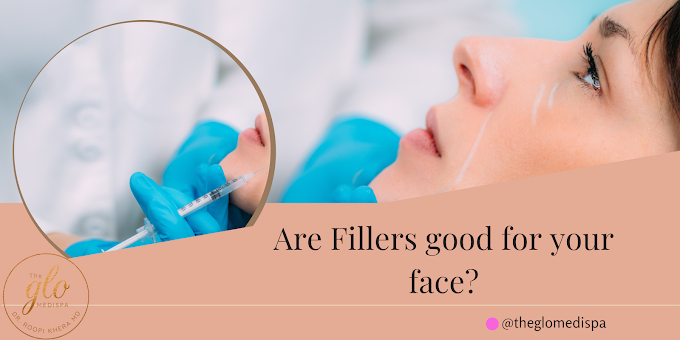Ageing is a natural process that affects every human being. Growing older has various visible signs on the face, such as wrinkles, fine lines, and loss of volume. Usually, a surgical facelift was the primary solution for reversing these signs of aging, but non-surgical facelifts with dermal fillers have become a popular and effective alternative. Dermal fillers are injectable substances that help restore lost volume, reduce wrinkles, and rejuvenate the face, providing a more youthful and refreshed appearance.
In this blog, we will explore the world of non-surgical facelifts with dermal fillers, understanding the procedure, its benefits, and what to expect. In order to create this blog, references have been taken from several skin experts in dermal fillers treatment in Ludhiana.
Dermal Fillers
Dermal fillers are gel-based substances that increase volume, smooth out wrinkles, and improve the lines of the face by being injected beneath the skin's surface. Hyaluronic acid, a chemical that is naturally present in human skin and aids in maintaining its hydration and volume, is often used to make these fillers. Furthermore, fillers include other substances as well. These are:
Calcium Hydroxylapatite Fillers
Poly-L-Lactic Acid Fillers
Polyalkylimide Fillers
Polymethyl Methacrylate (PMMA)
Most often, dermal fillers are considered botox injections. But they are not the same and have several differences. Some of them are as follows:
Difference: Botox is a neurotoxin used mostly to treat dynamic wrinkles, or lines brought on by repeated facial motions. It temporarily paralyzes the wrinkle-causing muscles, whereas injectable compounds known as dermal fillers provide volume to areas that have lost fullness, thereby minimizing static wrinkles and restoring facial features.
Treatment Objectives: Dermal fillers treat volume loss and drooping skin, whereas Botox targets muscle mobility.
Ingredients: While dermal fillers are normally made of hyaluronic acid or other biocompatible ingredients, botox contains the botulinum toxin.
Results: The effects of Botox endure for around three to six months, whereas those of dermal fillers can last for one or two years.
Target Areas: Botox is frequently used to treat frown lines, forehead furrows, and crow's feet, whereas dermal fillers work best on the lips, cheeks, and nasolabial folds.
The Non-Surgical Facelift Procedure
The procedure starts with the skin expert's and client's discussion regarding aims and expectations of the treatment. This discussion may include an evaluation of the client's facial structure.
To lessen any discomfort during the treatment, a topical numbing medication may be used.
To increase patient comfort during and after the injections, several dermal fillers now come pre-mixed with lidocaine, a local anaesthetic.
Fillers will be injected into particular areas of the face using a tiny needle or a blunt-tipped cannula.
The client's facial architecture, concerns, and desired results will determine the technique and injection locations to use. The cheeks, nasolabial folds, marionette lines, under-eye hollows, and lips are frequently treated areas.
Benefits of Non-Surgical Facelift Dermal Fillers
Immediate Results
Instant gratification is one of the non-surgical facelifts with dermal fillers' most important benefits. Following treatment, clients can immediately notice improvements in lines, wrinkles, and facial contours.
Natural-Looking Results
Dermal fillers can produce outcomes that are natural-looking because skilled practitioners are adept at recognizing the balance and proportions of the face. The fillers reduce wrinkles and help restore volume without giving the skin an excessive or unnatural appearance.
Minimal Downtime
Non-surgical facelifts using dermal fillers have minimal downtime compared to surgical facelifts, which have a lengthy recovery period. Mild swelling or bruising may occur in some customers, although this normally goes away within a few days.
Customizable Treatments
The ageing process and the worries that accompany it are particular to each person. Dermal filler procedures can be tailored to target particular problem areas, enabling a specialised approach to skin rejuvenation.
Long-Term Effects
Dermal fillers can last anywhere between six months and two years, though this can vary depending on the type used and the person's metabolism. Regular touch-up procedures might further prolong the impact.
Conclusion
Dermal fillers used in non-surgical facelifts have completely changed the cosmetic rejuvenation industry by providing a secure and efficient alternative to surgical procedures. This non-surgical facelift method has gained popularity as a treatment option for people wanting a youthful and rejuvenated appearance due to its quick results, natural-looking effects, and low downtime. Someone thinking about a non-surgical facelift needs to speak with a skin expert. In order to find a dermatologist in Ludhiana, one may visit The Glo Medispa and schedule an appointment with Dr. Roopi Khera.
.png)

.png)



.png)
0 Comments